The American Crocodile
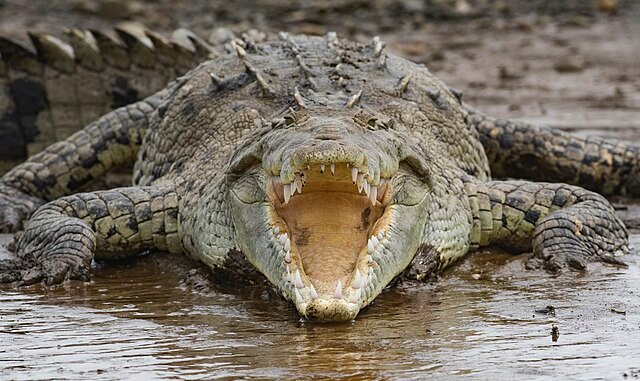
Many visitors who drive to Costa Ballena from San Jose are sure to pull over at the kitschy tourist attraction called the Crocodile Bridge – home to dozens of wild American Crocodiles that lurk under and around the highway overpass. This spectacle is a timely reminder that these creatures live all over Costa Rica – in fact they are common across a wide area ranging from Florida, across the Caribbean islands, Mexico, the whole of Central America and all the way down to the Amazon rainforest. While attacks on humans are rare, it is a good idea to become familiar with these animals and know how to minimize any chance of a nasty encounter with a creature that sports a bite force of 3000 pounds per square inch – one of the most powerful bites in the animal kingdom!

THE AMERIAN CROCODILE
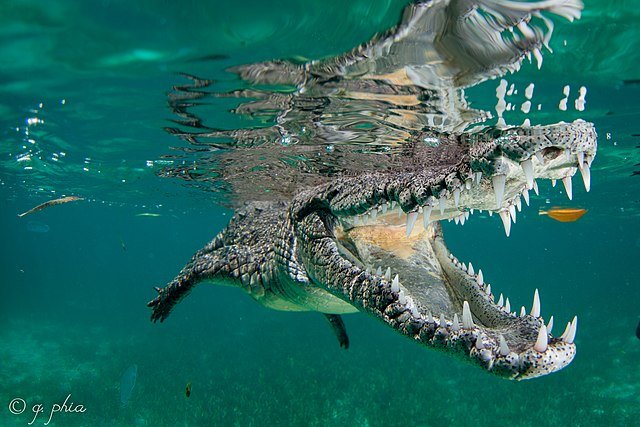
American Crocodiles are BIG – one of the world’s biggest crocodile species. Exceptionally old and well-fed males are known to reach 6 meters or 20 feet in length with a weight of over 1,000 kilos or 2,200 lbs. But lucky for us, the crocs usually measure in at a measly 3-4 meters or about 10-14 feet, and come in at around 400 kg or 900lbs. Females tend to be smaller than males. The famous Tárcoles ‘Crocodile Bridge’ crocodiles reach lengths of up to 4.5 meters and 500 kg or 1,000lbs in weight – they are amongst the longest and heaviest populations of American Crocodiles.
THE CROCS OF COSTA BALLENA
There are a few local American Crocodile hangouts – the Térraba River, Térraba-Sierpe Wetlands, and Playa Tortuga should be considered crocodile infested at all times – in fact the Ojochal area, due to proximity to the above locations, is considered to be a major Costa Rican crocodile hot spot. Crocs have also been seen at Playa Ventanas, Playa Dominical, Playas Hermosa & Uvita, Barú River, and even the entrance to Cinco Ventanas. It is safe to say that, from time to time, every marine coastal area of Costa Ballena is visited by the crocs – especially local rivers, river deltas, lagoons, estuaries and mangroves – the prime croc habitats. Just think of it this way – if you are near an area where fresh and salt waters mix, considered this area to harbour crocodiles.
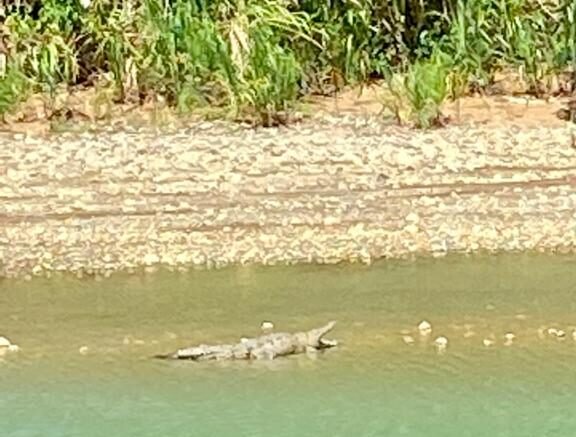

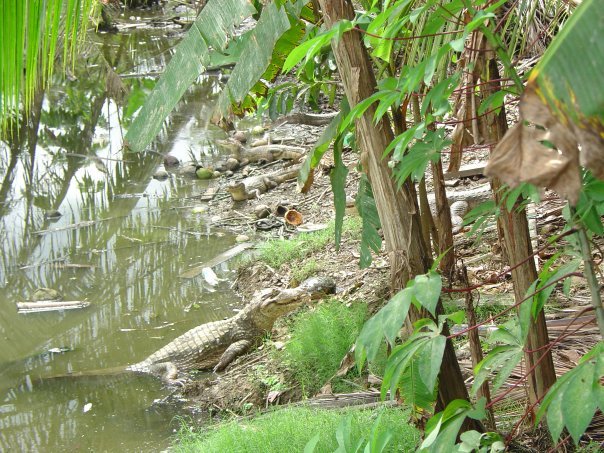
!!! CROCODILE SAFETY !!!
Lucky for us, the American Crocodile is known to be fearful of humans – it will not stand its ground when a human approaches, preferring to flee into the safety of the nearby water. This is vastly different from the Nile Croc of Africa or the ‘Saltie’ of SE Asia and Australia – these crocs actively go after people. Of course there are occasional encounters – while the crocs are usually docile towards humans they are known to get aggressive if surprised, threatened, hungry, if their nest or young are near, or if they mistake people for prey in poor visibility conditions. So make sure to avoid:
- Swimming in known crocodile-infested habitats. Those are likely to include rivers, swamps, lagoons, river deltas, estuaries and mangroves, but could also be ocean beaches or off-shore ocean islands. Pay attention to signs and local advice to identify such areas – but also use your judgement. If in doubt, stay out!
- Swimming in any likely crocodile habitats like rivers, swamps, lagoons, river deltas, estuaries and mangroves at night / around sunrise or sunset / if the water is murky.
- Camping or fishing near crocodile infested areas or likely crocodile habitats.
In addition:
- Exercise caution when entering any body of water after heavy rains because the crocs can become displaced and the water may be murky.
- NEVER approach any basking crocodile, or one that is in the water. The crocs are especially fast on land – don’t think you could outrun one! They can reach 18 km/h or 11 mph on land and an astonishing 32 km/h or 20 mph in the water – thanks to the movements of their powerful tails! They are also capable of explosive movements both on land and in the water.
- Pay attention to crocodile warning signs and heed any local advice.

As the American Crocodile loves brackish water and tolerates salt water, they occasionally venture into the open ocean or beaches that are far away from any rivers or river deltas. Specialized salt-excreting glands on their togues allow the crocs to venture deep into the ocean. And they are just an invisible in deep ocean waters as they are in shallow but murky rivers.
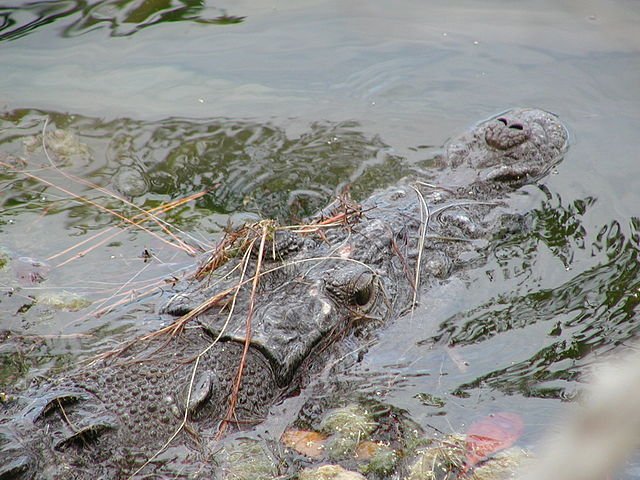

THE TÁRCOLES CROCODILES – THEY ARE THE BIGGEST!
The Tárcoles River, near Jaco, holds Costa Rica’s most famous population of American Crocodiles. Dozens of them can be seen lurking in the river waters or sunning themselves right under the highway overpass. A new tourist crossing has recently been constructed to safely separate the curious humans from the high speed road traffic. Shops, restaurants, cafes, and other businesses have sprung up on the norther end of the bridge to crate an impromptu tourist attraction. As mentioned earlier, the Tárcoles crocodiles are some of the largest specimens, often hitting 4.5 meters in length or longer – one of the largest crocs in the New World.
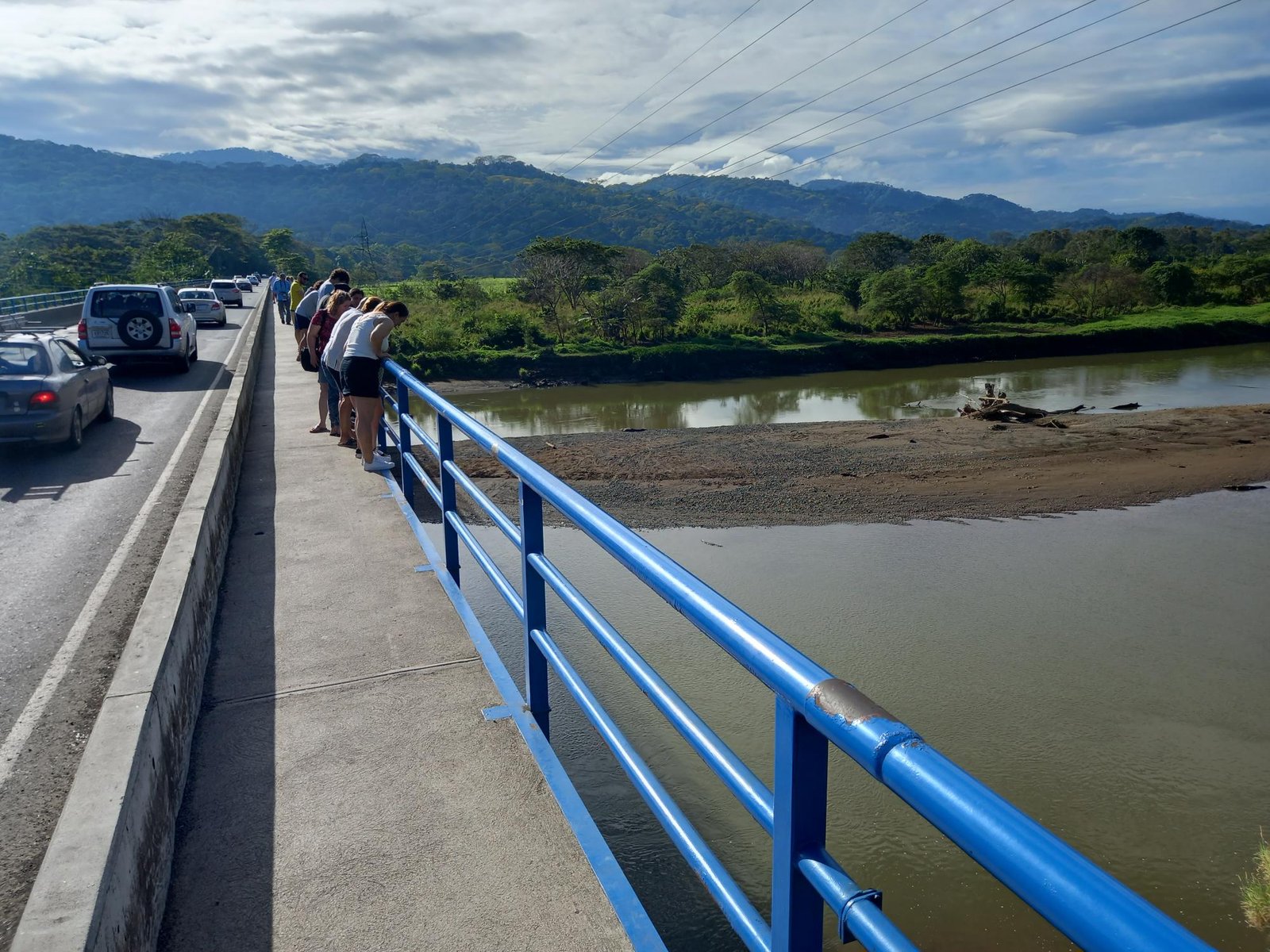
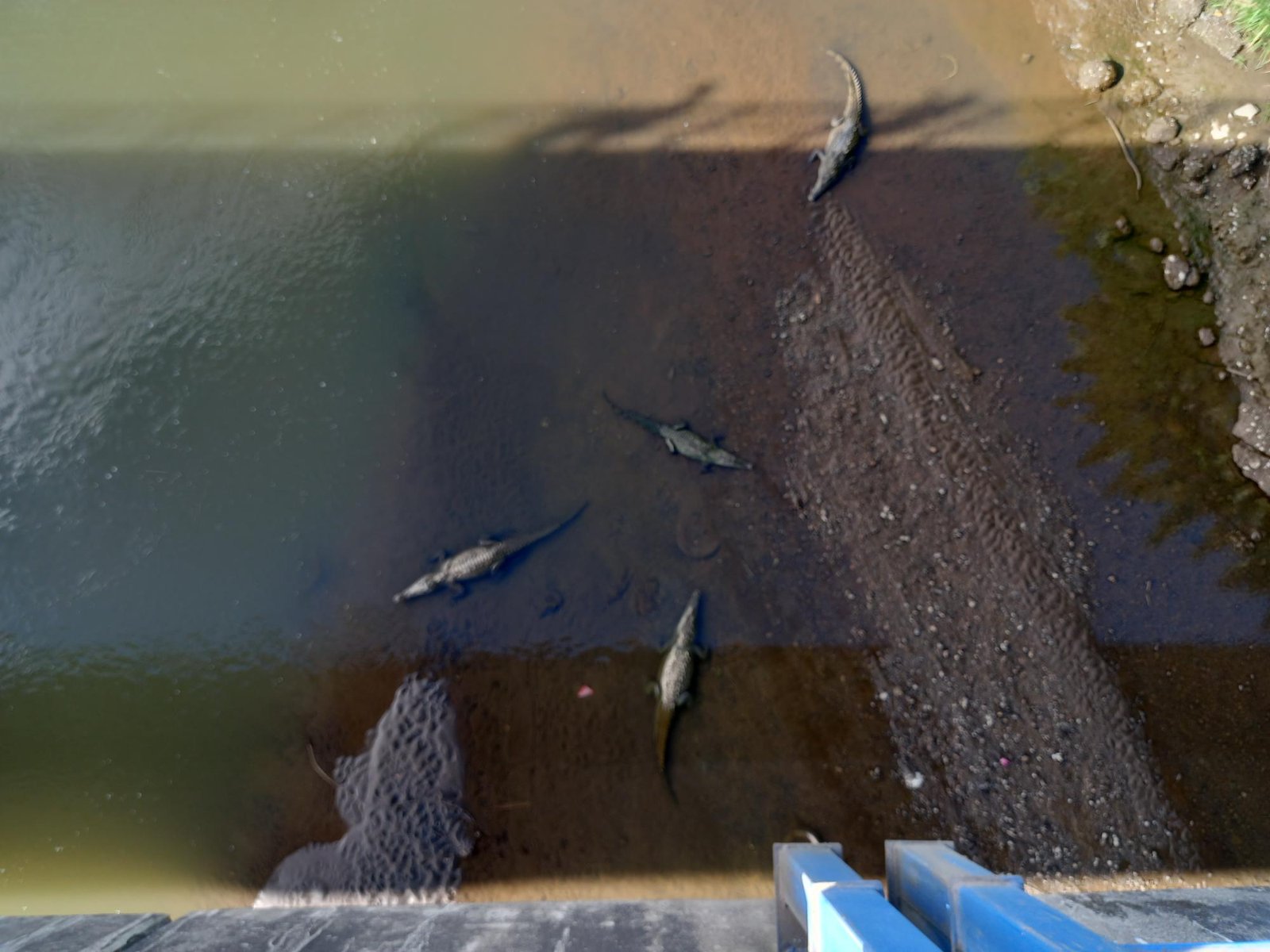

FOR HEAVEN’S SAKE – TAKE CARE OF YOUR DOGS
We have all seen the heartbreaking videos of dogs being taken by American Crocs along our local beaches – in some cases to the horror and screams of the nearby families. This has happened more than once on one particular local beach – PLAYA TORTUGA. Bringing a free-running dog to a known croc beach (and Playa Tortuga, at the Térraba River Delta, is a well-known croc beach) is extremely irresponsible. There is no excuse. Dogs are no longer the wild animal that can always recognize danger – we have bred that out of them over the last 30,000 years. As many videos show, they will run right up to the crocodiles, barking. And then the crocs turn around, grab the poor dog and disappear into the water – as easy meal, not to be passed over. It all happens in a few seconds.

THE FAMOUS POCHO!
A local American Crocodile gained worldwide attention when, on the verge of death, he was adopted and nursed back to health by a local fisherman, Gilberto “Chito” Shedden. In 1990 Pocho was found emancipated, dehydrated and near death – having been shot in the head be a local farmer due to his habit of feeding on his cattle. Chito took care of Pocho, putting the 70-kg croc into his boat to be taken to safety. Pocho was fed a diet of chicken and fish – 30 kg or 66lbs per week! The crocodile soon recovered and Chito released him into the wilds – but Pocho refused to leave and instead made his home in the river right outside Chito’s home. Chito started to swim and train the crocodile, the two becoming world famous performers – main stars of the Las Tilapias Tourist Center in Costa Rica. A video documentary featuring Chito and Pocho, called Dragon’s Feast, was filmed shortly before Pocho’s death in 2011. Pocho left a legacy of education & understanding, compassion, patience, and has inspired countless people to learn more about nature and the amazing American Crocodile.
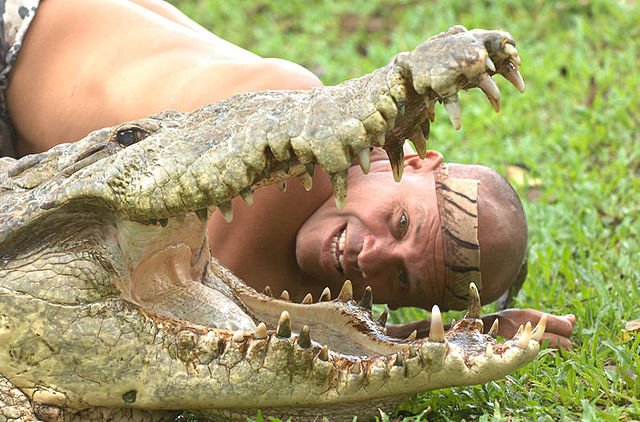
DIET
Considered to be apex predators, the American Crocodiles will potentially attack any animal that crosses their path – whether on land, in a swamp or river, or out in the open ocean waters. The crocs typically feed on birds, mammals, turtles, fish, lizards, amphibians, smaller crocodiles, and sometimes carrion or fruits. Often crocs can become habituated to feeding on dogs, domestic pigs & goats, ducks & chickens, and are even known to hunt full-grown cows! This can create conflict with local farmers.
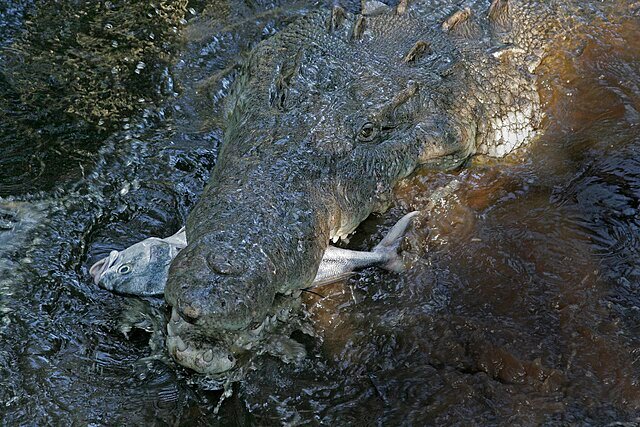
Here in Costa Rica, the American Crocodiles have developed a habit of ambushing sea turtles as they approach the beach to lay their eggs – this was a surprising find as it was considered that Sharks and Orcas were the only animals strong enough to break through the shell of the Olive Ridley Sea Turtles.
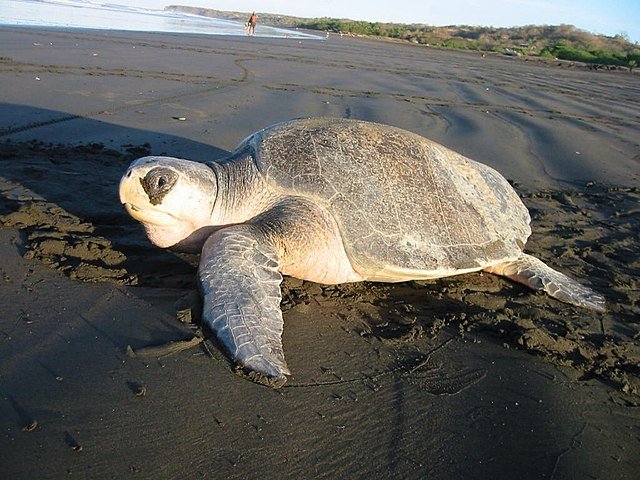
American Crocodiles can go for months without eating – they do so by greatly slowing down their metabolism. When hunting, the animals can remain submerged for over an hour.
BREEDING
The female builds a nest made of mud, sand and vegetation before laying between 30-60 eggs. The nest helps to maintain the perfect temperature for the incubation of eggs. The temperature at which the eggs incubate dictates the sex of the young – cooler temps tend to produce females while warmer air tends to produce males. The mother often guards the nest and, once hatched, will take care of the hatchlings – often carrying the young crocs in her moth from the nest to the water.
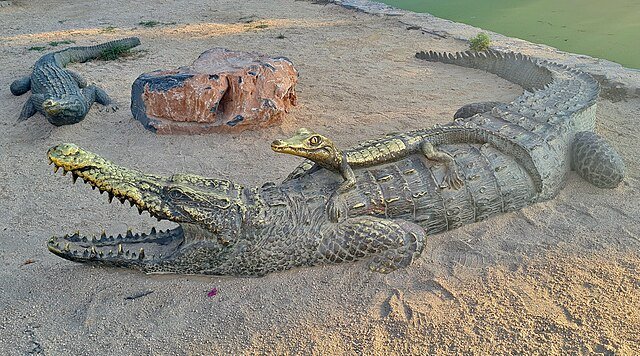
INTERESTING FACTS
- Crocodiles are not able to regulate their body temperature – so they ‘bask’ in the sun to bring their body temperature up, and head into the waters or shade to cool off.
- In the wild, American Crocodiles can live to be 70-100 years old.
- ‘Crocodile Tears’ refers to the habit of crocs ‘crying’ while eating – this has nothing to do with feeling sorry for the poor dinner animal; it is rather a physiological response related to the eating process.
- Crocodiles are ancient, predating the dinosaurs. They have not changed much in 200 million years.
- American Crocodiles have around 80 teeth – and each tooth can be replaced up to 50x during the lifetime of the crocodile.
- The muscles used to open the crocs’ mouths are super weak – a human can easily hold shut the American Crocodile’s mouth. But the opposite is true when it comes to the crocs closing their mouths!
- Grunts, hisses and deep growls are how the crocs communicate with each other – while younger crocs and hatchlings make chirping sounds to stay in touch with their mother. The crocs also use body language like snapping their head against the water.
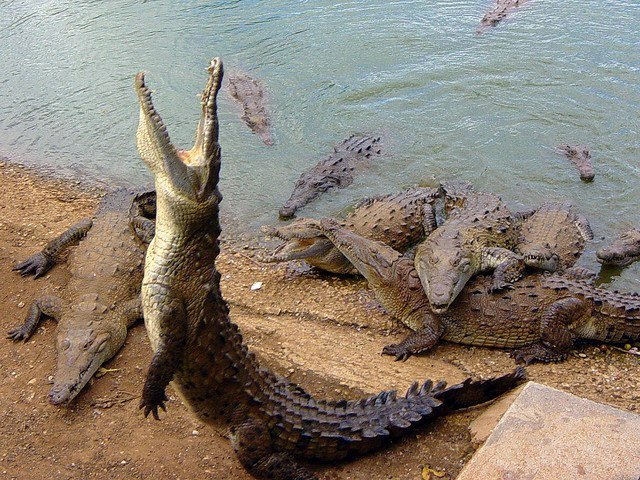
Do you dream of living in the midst of breathtaking tropical scenery and amongst amazing animals like the American Crocodile? They are a sight to behold, especially when seen free and wild along our numerous river estuaries – an ancient reptile unchanged for 200 million years. The crocs are a part of our tropical landscape! At RE/MAX WE SELL PARADISE, we list hundreds of tropical properties – homes, land, farms, estates & businesses – all within a stone’s throw of the amazing rainforests, mountains, rivers and beaches that make Costa Ballena a world-famous destination. See our property listings here.
Cover image c/0 Randall L. Ortega, wikicommons.



